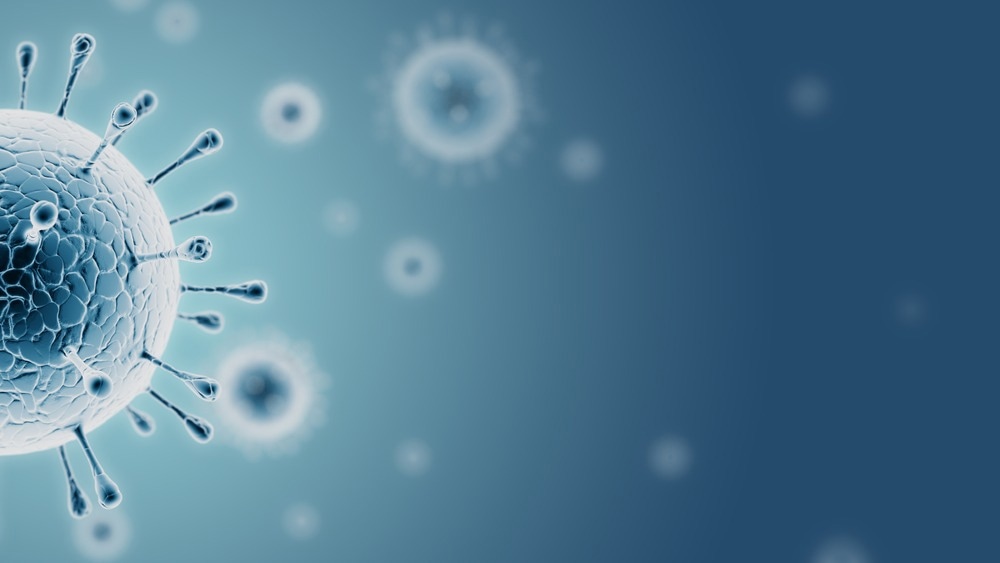In a recent study posted to the bioRxiv* preprint server, researchers performed in vitro experiments to test the ability of different frequencies of ultrasound to inactivate severe acute respiratory syndrome coronavirus 2 (SARS-CoV-2).
 Study: Ultrasound treatment inhibits SARS-CoV-2 in vitro infectivity. Image Credit: NicoElNino/Shutterstock
Study: Ultrasound treatment inhibits SARS-CoV-2 in vitro infectivity. Image Credit: NicoElNino/Shutterstock

 This news article was a review of a preliminary scientific report that had not undergone peer-review at the time of publication. Since its initial publication, the scientific report has now been peer reviewed and accepted for publication in a Scientific Journal. Links to the preliminary and peer-reviewed reports are available in the Sources section at the bottom of this article. View Sources
This news article was a review of a preliminary scientific report that had not undergone peer-review at the time of publication. Since its initial publication, the scientific report has now been peer reviewed and accepted for publication in a Scientific Journal. Links to the preliminary and peer-reviewed reports are available in the Sources section at the bottom of this article. View Sources
Background
The coronavirus disease 2019 (COVID-19) pandemic has resulted in the rapid development of various vaccines and antiviral therapies. Research on COVID-19 has expanded to fields beyond biology and medicine, including physics, engineering, and artificial intelligence.
A team of researchers proposed using ultrasound frequencies to disrupt the viral proteins and neutralize SARS-CoV-2. This hypothesis was tested through theoretical experiments to study the interactions between SARS-CoV-2 spike proteins and ultrasound harmonics. However, the hypothesis has not hitherto been tested using in vitro experiments.
About the study
In the present study, the researchers produced viral stocks of the SARS-CoV-2 Wuhan-Hu-1 strain and the Gamma and Delta variants in biosafety level three conditions. Solutions containing these SARS-CoV-2 variants were exposed to different ultrasound frequencies of 3–12 MHz, 5–10 MHz, and 6–18 MHz for 30 minutes.
Vero E6 cells were then infected with SARS-CoV-2 culture mediums exposed to ultrasound frequencies and those not exposed to ultrasound and incubated for one day. The Vero E6 cells were then subjected to immunostaining for SARS-CoV-2 spike protein and double-stranded ribonucleic acid (dsRNA) to detect SARS-CoV-2 replication in vitro. The infection and replication of the virus in the cells were evaluated using confocal microscopy and immunofluorescence.
Median tissue culture infectious dose (TCID50) assays were used to assess viral particles. One-way analysis of variance (ANOVA) was carried out to determine the statistical significance of the results.
Results
The results reported that ultrasound frequencies of 3–12 MHz, 5–10 MHz, and 6–18 MHz inhibited viral replication of the Wuhan-Hu-1 strain, but only the 5–10 MHz showed any virucidal effect against the SARS-CoV-2 Gamma and Delta variants.
Infection of Vero E6 cells using the ultrasound-treated viral stocks revealed that exposure to 3–12 MHz and 5–10 MHz ultrasound frequencies significantly reduced the viral titers of the Wuhan-Hu-1 strain but not of the SARS-CoV-2 Gamma or Delta variants. The viral culture showed no change in temperature upon exposure to different ultrasound frequencies.
While the hypothesis initially proposed that high frequencies between 100 and 500 MHz could disrupt the viral carapace and spike proteins, lower frequencies between one and 20 MHz were also thought to be effective in damaging the tropocollagen and α-helix structures of the spike protein. The current results revealed that ultrasound frequencies used in everyday medicine that are considered safe could effectively neutralize some strains of SARS-CoV-2.
Conclusions
To summarize, the study investigated the use of different ultrasound frequencies to disrupt the SARS-CoV-2 spike protein structure and neutralize the virus. Viral replication tested in Vero E6 cells revealed that replication of the Wuhan-Hu-1 strain was inhibited by 3–12 MHz and 5–10 MHz ultrasound frequency ranges, but the cell cultures inoculated with SARS-CoV-2 Gamma and Delta variants showed low viral titers only when the viruses were exposed to 5–10 MHz ultrasound frequencies.
The results indicated that ultrasound frequencies produced by medical devices in everyday use could be used to inactivate SARS-CoV-2. Ultrasound inactivation could be used with other antivirals to reduce viral titers of SARS-CoV-2.

 This news article was a review of a preliminary scientific report that had not undergone peer-review at the time of publication. Since its initial publication, the scientific report has now been peer reviewed and accepted for publication in a Scientific Journal. Links to the preliminary and peer-reviewed reports are available in the Sources section at the bottom of this article. View Sources
This news article was a review of a preliminary scientific report that had not undergone peer-review at the time of publication. Since its initial publication, the scientific report has now been peer reviewed and accepted for publication in a Scientific Journal. Links to the preliminary and peer-reviewed reports are available in the Sources section at the bottom of this article. View Sources